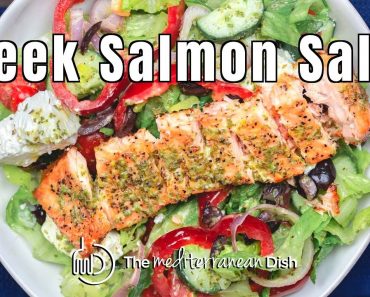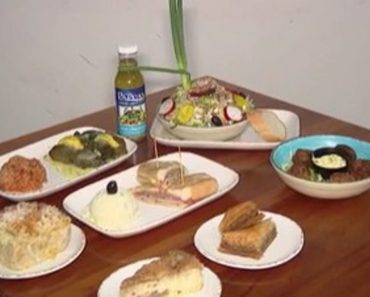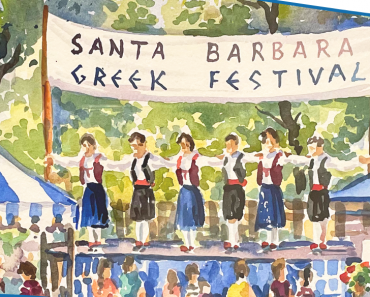Sunday has long been a special day for Christians. Many members of the church believe that God created the world in six days, while on the seventh day (Sunday) he rested. And so generations of Christians and people in predominantly Christian countries have also rested on Sundays. But over the years, the second day of the weekend has become less about religion for many people, and more about taking time to slow down, spend time with loved ones, and eat lots and lots of good food.
From East to West, special foods are eaten on Sundays. In the U.K., for example, pubs and households serve up roast dinners, while in certain regions in China, it’s all about dim sum. In the U.S., many Americans are used to sitting down to a feast of waffles, pancakes, and eggs for Sunday brunch. Planning your next Sunday meal? Find out about all of these and more traditional foods below.
English roast – U.K.
King Henry VII was known for many things. Taking lots of wives (and beheading a few of them), starting the Church of England (partly so he could divorce some of those wives), that sort of thing. But the monarch’s enormous influence extends to food traditions, too. King Henry VII loved to eat roast beef, and he wasn’t alone. His guards also loved it, which is why they eventually earned the nickname “Beefeaters.”
The rest of England loved roast beef, too. But unlike the king, they didn’t have access to large royal kitchens, so they had to make do with what they had access to: Bakeries. Every Sunday, when the bakers weren’t baking bread, people across England would drop their meat off at the bakery on the way to church so it could roast in the large bread ovens. They’d pick it up on the way home, and serve it with vegetables and gravy.
Today, roast dinners are still enjoyed on Sundays across the U.K. But every household and pub has their own spin; some make it with roast chicken or pork, while others opt for a plant-based nut roast. But whatever the protein in the center of the plate, one thing is always guaranteed: There will be plenty of crispy potatoes, roast vegetables, Yorkshire puddings, and gravy.
Dim sum – China
Chinese cuisine is incredibly diverse. Sichuan dishes, for example, tend to be on the spicier side, filled with hot, local peppers, while food from Hunan is often a combination of spicy and sour. Shandong cuisine is rich in salty seafood, and Jiangsu cooking is all about turning up the umami. And when it comes to Cantonese-style cuisine, one of the most famous ways to prepare food is dim sum style.
Typically eaten as a family as a leisurely Sunday brunch, dim sum consists of several small must-order dishes, like steamed shrimp dumplings, steamed bbq pork buns, Chinese broccoli, and fried spring rolls.
Traditionally, dim sum is always enjoyed with tea. It’s been that way for centuries; in fact, the ritual of enjoying dim sum as a family over a pot of tea started in 19th century teahouses in Guangzhou. Now, you’ll find dim sum restaurants everywhere, across China and Hong Kong, and in the U.S., too.
Sunday brunch – U.S.
Sunday brunch likely wasn’t invented in the U.S. In fact, one of the first recorded mentions of the meal (which, of course, is a portmanteau of breakfast and lunch) was in a London publication called “Hunter’s Weekly” in 1895. Writer Guy Beringer requested that instead of large Sunday meals after church, a sociable, light, late breakfast was eaten instead. He suggested that this would make life easier for those who had stayed up late on a Saturday evening. The concept of brunch quickly rose in popularity, reaching the U.S. around the 1930s.
While Sunday brunch is enjoyed in many countries, the U.S. arguably takes it the most seriously, even today. One survey on America’s brunch habits, conducted by Ask Your Target Market in 2017, found that nearly 40% of people had eaten the mid-morning meal at some point in the previous three months.
Traditional American brunch dishes vary, but some of the most popular include waffles, French toast, soft-boiled eggs, and quiche. Often, it’s all washed down with coffee or a mimosa, the ultimate brunch cocktail.
Paella – Spain
There are many different ways to make a delicious Spanish paella. Some make the bomba rice dish with seafood or just vegetables, while others opt for chorizo. In Valencia, where the dish originated, traditional paella is often made with chicken and rabbit. This stems back to when it was first created; local farmers would use whatever they had available to them and throw it all in a pan to cook while they worked.
Valencian paella is still slowly cooked in a large paella pan, often over an open fire, and then shared with family and friends. Because paella is a social meal, it’s usually reserved for Sundays, when everyone gathers together at the end of the week. In Valencia, and across Spain, Sundays are a day for relaxation, rest, and sharing good food.
Another popular Spanish Sunday ritual? Heading out to the bar for a glass of sweet, red Vermouth before lunch. Supposedly, the Vermouth works as an aperitif, and helps to stimulate the appetite before a big meal.
Seven colors – South Africa
On Sundays and special occasions, tables across South Africa are often filled with a bright, colorful feast of different dishes. Think white meat, red beetroot, yellow rice, orange sweet potatoes, brown gravy, purple cabbage, and green spinach. Every household has their own version with different signature recipes and dishes, but one thing unites them: It’s always an incredibly aesthetically-pleasing spread, which is why it has earned the name seven colors.
One of the best parts about the seven colors feast is that the range of shades means that the meal is always incredibly balanced. The vegetables offer a wealth of nutritional benefits, of course, but each part also brings a different texture and flavor profile to the mix. And on top of this, it’s a celebration of the different cultures across South Africa, too. Families blend different heritages, from Zulu to Tsonga to KwaZulu-Natal, to create a diverse, vibrant spread that’s full of flavor and tradition.
Asado – Argentina
On Sundays in Argentina, families often gather to grill together. But make no mistake, this is not just your standard barbecue. This is traditional Argentinian asado, and it’s a careful, considered culinary experience.
Before the meats, like ribs, blood sausages, and chorizo, are added to the grill, the fire is thoughtfully prepared with the right wood and the right arrangement of embers by the asador, who is the master of the grill. Then, the meats are added in the exact right order to ensure that each cut gets the exact right amount of time on the fire. Everything is then served with a sprinkle of salt and a little chimichurri on the side.
Argentinian asado is meat-heavy, but, nowadays, there are plant-based asado dishes, too. Examples of meat-free options include vegan empanadas, vegan chorizo, and oyster mushrooms. But the most important part of any asado experience? The coming together of family and friends to share food and chat, which is why it typically takes place on a Sunday.
Moussaka – Greece
In Greece, most of the population follow the Greek Orthodox religion, which, like most Christian churches, views Sunday as a day of worship. But, again, it’s also a day to enjoy spending time with family and to share a large meal.
The food offered on Greek tables on Sundays varies from region to region, but many families opt to cook up moussaka, which is kind of like a Greek lasagna, made with layers of eggplant, mince meat, and potatoes. It is one of the most popular dishes in the whole country, and is even considered by many to be one of its national dishes (other favorites include gyros, souvlaki, and fasolada).
The types of dishes served alongside the moussaka depend on the season. In the summer, for example, dolmades, gemista, and utterly craveable Greek salad are more likely to make an appearance. In the winter, warming dishes like prasorizo (leek rice) and spetsofai (sausages, peppers, and tomato sauce) might take their place on the table.
Fresh pasta – Italy
Sundays in Italy are also about family, friends, and spending long afternoons together eating lots of delicious, homecooked food. Sometimes, an Italian Sunday lunch can last the entire afternoon because it consists of many different courses, including antipasto, primo, secondo, dessert, and fruit. Many families choose to serve pasta as the primo (or first course), which is often made fresh on the same day it’s served.
Pasta isn’t just eaten on Sundays in Italy, of course, but it isn’t usually eaten fresh throughout the week. Dried pasta is simply more convenient and practical. Fresh pasta, on the other hand, is laborious and time-consuming to make, and so is often reserved for special occasions.
After the primo, there is the secondo and the cortorni, which means second course and side dishes. This varies, but, as in the U.K., these courses usually consist of roast meat like beef, lamb, or pork, with roasted potatoes and greens.
Sunday sauce – U.S.
Another popular Sunday dish, Il ragù della domenica, also has its roots in Italy. The name literally translates to Sunday sauce, and it’s been a fixture on Italian American Sunday dinner tables for generations. Usually, the sauce is served as part of the huge Sunday feast, but it can make an appearance in many different dishes, from lasagna to meatballs.
Every Italian American household has their own version of Sunday sauce, but it’s usually rich, marinara-type gravy cooked alongside meat for extra umami flavor. Some make it with standard tinned tomatoes, while others prefer fresh or crushed San Manzano tomatoes, for example. Some make it with beef, while others opt for pork, and a few choose to omit the meat completely and make it with mushrooms instead. Some Sicilian-American families call Sunday sauce “sugo,” but it’s usually made in much the same way, with tomatoes, meats, and lots of garlic, herbs, and spices.
Fried chicken – Slovenia
When you think of fried chicken, you probably first think of a certain colonel, and then probably the U.S. South, where states like Alabama, Texas, and Louisiana all have their own versions of the dish. But fried chicken is big in many countries around the world. In Slovenia, for example, people have been eating fried chicken drumsticks since at least the 17th century. Back then, port workers in the capital of Ljubljana would stop to snack on drumsticks and wings to break up the work day.
Today, fried chicken is still eaten in many different formats across Slovenia. On skewers, it’s called palčki, for example, while drumsticks are known as leteči žganci. Fried chicken is often served as part of a traditional Sunday lunch in Slovenia, together with roast potatoes and salad drizzled with pumpkin seed oil. It’s usually combined with some form of soup as a starter, and there’s nearly always a dessert, too.
Sunday rice – Nigeria
Sundays in Nigeria are for church. In fact, church attendance in the West African country is among the highest in the world. Per Urban Ministries, nearly 90% of people in Nigeria attend church every Sunday. But after church? That’s when it’s time to eat together. And one dish you’ll find on most Nigerian Sunday tables without fail? Rice.
In fact, the grain has become so synonymous with Sundays in Nigeria, it is now widely known as Sunday rice. The type of rice varies depending on the household, and some families choose to switch up the rice dishes from Sunday to Sunday.
Some prefer to opt for white rice, which is usually served with red stew, for example. Others opt for jollof rice, which is a simple, flavor-packed combination of basmati rice, bell peppers, tomatoes, chillies, onions, herbs, and spices. Fried rice is also a favorite. In Nigeria, fried rice is, again, usually made with basmati rice, and is often fried with liver and mixed vegetables.
Cozido – Portugal
Cozido has been eaten across Portugal for centuries. In fact, the first written record of the dish dates back to the mid-1600s, when it was likely derived from similar Spanish recipes. Today, however, the dish is distinctly Portuguese; its full name is even cozido à portuguesa, and it’s considered by many to be Portugal’s national dish.
Often served as a large Sunday meal, cozido is a type of hearty stew. Traditionally, it’s made with multiple different meats (everything from beef to pork to chicken to blood sausage), cabbage, garlic, and lots of root vegetables, which are all simmered together and served in the center of the table with rice. That said, recipes vary from household to household and from region to region. Some prefer to make it with beans and chickpeas, for example, while others opt for chicken or sweet potatoes. In the autonomous Azores, cozido with smoky sausages and local vegetables is cooked by steaming rocks and geothermal springs on the side of the volcano.
Le déjeuner du dimanche – France
The French take Sundays seriously. In 1906, a law was even passed establishing Sunday as a day of rest. Even now, it’s a day to relax and spend time with family, just as it is in many other countries on this list. And, of course, Sundays in France are for eating a lot of food. In France, traditional Sunday lunch is known as le déjeuner du dimanche, and it’s usually a pretty extravagant affair. Like in neighboring Italy, the meal often consists of several courses.
First there’s a starter, which might be pâté or escargot, and then there’s le plat principal, also known as the main event. This dish can be anything from roast lamb to boeuf bourguignon, depending on preferences. And it’s not over yet. After the main course, there’s a cheese course, and then finally a dessert, followed by coffee. But everyone does Sunday lunch their own way, of course. Some forgo the meat entirely, opting for courses of light salads, cheese, and melon instead.
Rice and peas – Jamaica
Similar to Nigeria, Sundays in Jamaica are all about rice. But not just any rice dish will do; it has to be rice and peas.
The versatile dish usually consists of rice and red kidney beans (known as peas in Jamaica), which are combined with ingredients like coconut milk, scotch bonnet pepper, scallions, pimento, garlic, ginger, thyme, and salt. Rice and peas used to be lovingly prepared all Sunday-long by families who would grate coconut by hand and soak beans overnight, but today, it’s often made with more convenient store-bought ingredients.
Rice and peas are a Sunday fixture, but the main that the popular side dish is served alongside varies. Some opt for fried chicken wings, for example, while others might go for jerk lamb or fried plantain. Like all of the countries on this list, Sunday lunch in Jamaica is a social affair, seen as an opportunity to gather friends and family together.
Húsleves – Hungary
Once again, like many European countries, Hungary slows down on a Sunday. Families gather together to cook and eat together, and one dish that’s nearly always on the menu is húsleves.
Similar to a French beef consommé, húsleves is a thin, clear broth made with a mix of meat and hearty root vegetables. It’s incredibly versatile, and can be made with whatever ingredients you have on hand and want to use up. Some prefer to make it with beef marrow bones, while others choose chicken, which is mixed with vegetables like carrots and parsnips alongside bay leaves and parsley. Paprika is usually sprinkled on top like salt, and often, húsleves is served with noodles or freshly made csipetke, which is also known as pinched pasta.
While húsleves is a popular Sunday dish, it’s also eaten on many other occasions. Because it’s so comforting and nourishing, many Hungarians reach for a bowl when they’re sick, feeling down, or want to warm up during a chilly winter day.






















